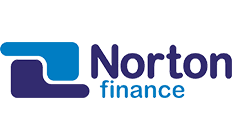With money tight for many households, you might be looking for ways to access some extra cash. If you’re a homeowner, one potential way to do this is to release some of the equity in your property.
Equity refers to how much of the value of your home you own outright. Your home equity should rise over time as you make your mortgage payments and if the value of your home increases. Releasing some of that equity could enable you to pay for important home improvements, pay for school fees or simply live more comfortably.
One way to do this is through a HELOC.
What is a HELOC?
A HELOC, or home equity line of credit, is a type of revolving credit that enables you to borrow against the equity in your home. The amount borrowed is secured against your property and you then receive the funds as a line of credit.
You can draw on these funds for a set number of years, usually between 5 and 10, and this is known as your “draw period”. You can only draw funds up to your set credit limit and you then repay the amount borrowed plus interest.
HELOCs are commonly used by homeowners in the US, Canada and Australia, but they are now starting to hit the UK market.
How does a HELOC work?
A HELOC works a bit like a credit card in terms of the flexibility it offers. Instead of borrowing a fixed lump sum as you would with a standard loan, you can continuously borrow against your line of credit as long as you don’t exceed your credit limit. During your draw period, you can draw on your funds, repay them and then redraw.
This flexibility can be particularly useful if you’re not sure how much money you need – if you are carrying out home improvements and they end up being more costly than expected, you can simply borrow more from your line of credit.
Once the draw period has come to an end and you’ve entered your repayment period, you can no longer access your funds and must repay the amount borrowed, plus interest.
You’ll only ever pay interest on the amount you’ve borrowed – you won’t be charged interest on any funds you’ve left untouched. What’s more, if you’re paying for something in stages, you can draw on funds as needed and you won’t need to pay interest on the whole amount from the beginning.
How do HELOC repayments work?
HELOCs have 2 payment periods – the draw period and the repayment period.
During the draw period, you can borrow money from your HELOC as often as needed. You can also make repayments during that time – these might be interest only, or you can choose to pay off some of the capital too.
During the repayment period, which starts after the draw period ends, you must pay off the full amount borrowed plus interest. You can no longer make withdrawals during this time.
Some HELOC providers allow you to be flexible with your repayments, so you can choose to pay off more each month if you wish to without paying a penalty fee. You will also usually be able to select how long you want your repayment period to be, whether that’s 5 years or 30 years.
Pros and cons of HELOCs
Pros
- You only pay interest on the amount borrowed.
- Flexible repayment options, with some providers letting you overpay without penalty.
- You can borrow more than is possible with a personal loan or credit card.
- Interest rates can be competitive.
- You can borrow when you need to, up to your credit limit.
Cons
- You may have to pay a product fee.
- You must secure the HELOC against your home, which means your home is at risk if you can’t repay the loan.
- You’ll have 2 monthly payments to make – 1 for your mortgage and 1 for your HELOC.
- Interest rates are variable, which means they could increase during the term.
Typical eligibility requirements
To be eligible for a HELOC, you will need to be a homeowner and you will need to have sufficient equity in your property. If you have little to no equity in your home, you’re unlikely to get accepted for a HELOC. Some providers will also ask that your property meets a particular value threshold.
On top of this, you may have to meet certain income requirements and you will need a good credit score.
Next steps







Alternatives to HELOC
There’s no product quite like a HELOC. A credit card follows a similar priciple, but offers much less… credit! But if you’re not sure if a HELOC is the right choice for you, you might want to consider the following alternative ways to borrow.
Home equity loans
A home equity loan is a secured loan, which means you can borrow money against the equity in your property. However, rather than receiving funds as a line of credit as you do with a HELOC, you receive a lump sum. You then repay that amount, plus interest, over a set term in monthly instalments.
The advantage of this is that your payments are fixed, which can help if you’re on a budget. Interest rates can be fixed too. The downside is that you’ll need to have a good idea of how much you need to borrow – if you need more funds, you’ll need to take out another loan.
Personal loans
A personal loan does not need to be secured against your property, which means you can borrow funds without owning a home. Again, you borrow a lump sum that must be repaid in fixed monthly instalments over a set term. However, the amount you can borrow will usually be a lot less compared to a home equity loan or HELOC and interest rates can be higher.
Remortgaging
Another option is to release equity in your home by remortgaging. To do this, you will need to ask your lender to add the amount you want to release to your new mortgage. You will then repay the amount borrowed in monthly instalments over the remainder of your mortgage term.
The biggest downside of this option is that mortgage rates are rapidly rising, making it more expensive. Your mortgage payments will also be higher because you’ll be taking on a larger mortgage. Another drawback is that if your existing mortgage deal hasn’t come to an end, you could pay a hefty early repayment charge to get out of the deal early.
Bottom line
A HELOC could be worth considering if you need some extra cash and you have sufficient equity in your home, particularly if you like the idea of being able to flexibly access your funds when needed.
However, remember that a HELOC is secured against your property, which means your home is at risk if you can’t keep up with your repayments. For this reason, you need to think carefully about applying for a HELOC and take steps to ensure you can afford your monthly repayments.
Frequently asked questions
More guides on Finder
-
Loans for students
Most students have to operate on a shoestring budget, but when a financial shortfall hits, thankfully there are a number of options to consider.
-
Loan companies like Zopa
Looking for online peer-to-peer lending platforms? Here’s a list of similar companies to Zopa with example loans and lender terms.
-
Compare bad credit, no guarantor loans
Looking to borrow money without using a guarantor? It’s possible, even if you have a bad credit score
-
Season ticket loans
With ever-rising public transport costs, it’s more important than ever to find the cheapest way to fund your commute. Here’s how to weigh up the options and find what works for you.
-
Loans for gaming laptops
Want to be able to game whenever you go, but not sure you can afford to splash the cash on a gaming laptop? From in-store finance to personal loans, check out our guide to finding the right loan for you.
-
Compare joint loans
Taking out a joint personal loan is a major commitment, but one that could help you to borrow larger sums at competitive rates.
-
Loans like RateSetter
RateSetter might be the biggest name in peer-to-peer lending right now, but it isn’t alone in this growing sector. Compare similar platforms offering competitive rates to borrowers and investors alike.
-
Compare £10,000 personal loans
Whether you have good or bad credit you could get approved for a £10,000 personal loan. Compare the best lenders for your individual circumstances.
-
Sainsbury’s loans calculator and review
Whether you’re planning on some home improvements, replacing your car or simply getting your finances in order, Sainsbury’s offers fixed rate personal loans of up to £25,000 to Nectar card holders. Fast, easy comparison with a range of lenders.
-
Post Office loans calculator and review
Compare Post Office fixed-rate personal loans against products from a range of UK lenders. Apply online and secure a competitive rate.
